- Sequence of presentation
- Scientific text structure
- annotation
- Prologue
- Main part
- Final part
- Bibliography
- Keywords
In order for your scientific work to be published in a particular publication, you need to know how to arrange it correctly. Moreover, the requirements of different publishers are distinguishable from each other. Only the main points are the same. Another author should know that articles are accepted not only in printed form, but also in electronic form. These rules are mandatory conditions.
So the writer needs to know how to work on a PC and be able to transfer data through the world wide web. Otherwise, you will have to pay for the services of the operator. If you decide to cope with all this yourself, then you need to use an editor to print the work.
Word, page size - А-4 (portrait orientation), the fields are different: either 2 cm or 2.5 cm (depending on the requirements of the publisher). The font type is “Times New Roman”, the letter size is 14, and the space between them is 1.5. Brackets are used for the design of links.
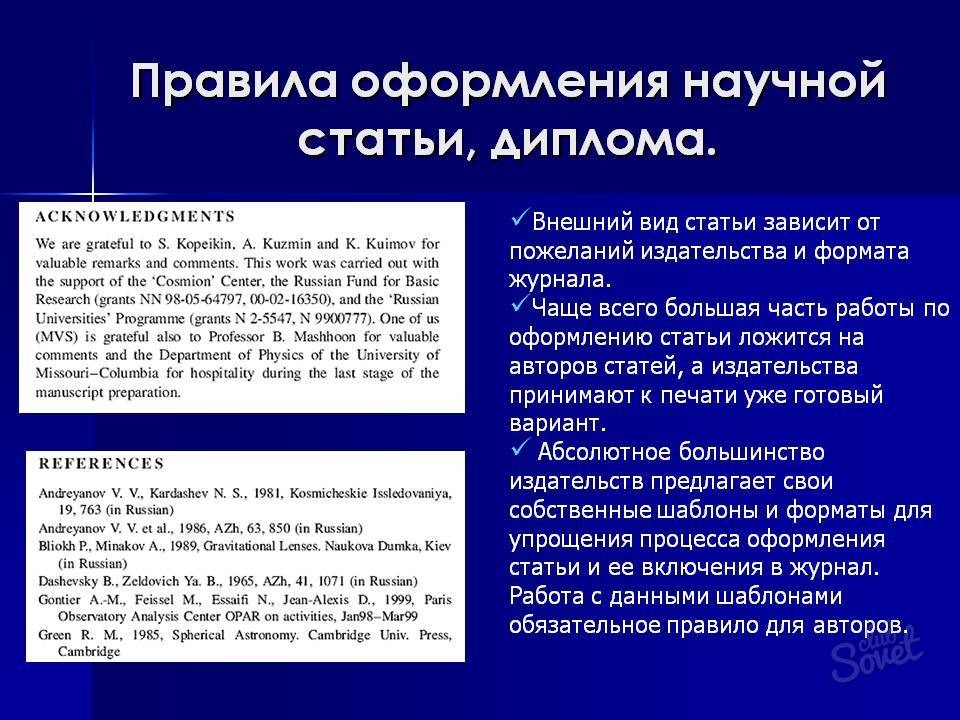
The article is arranged in the following order: title of work, announcement, tags (keywords), introduction, research material, experimental data, conclusions, and at the end, which list of sources you used. It is recommended to apply in the article no more than 10 foreign sources.
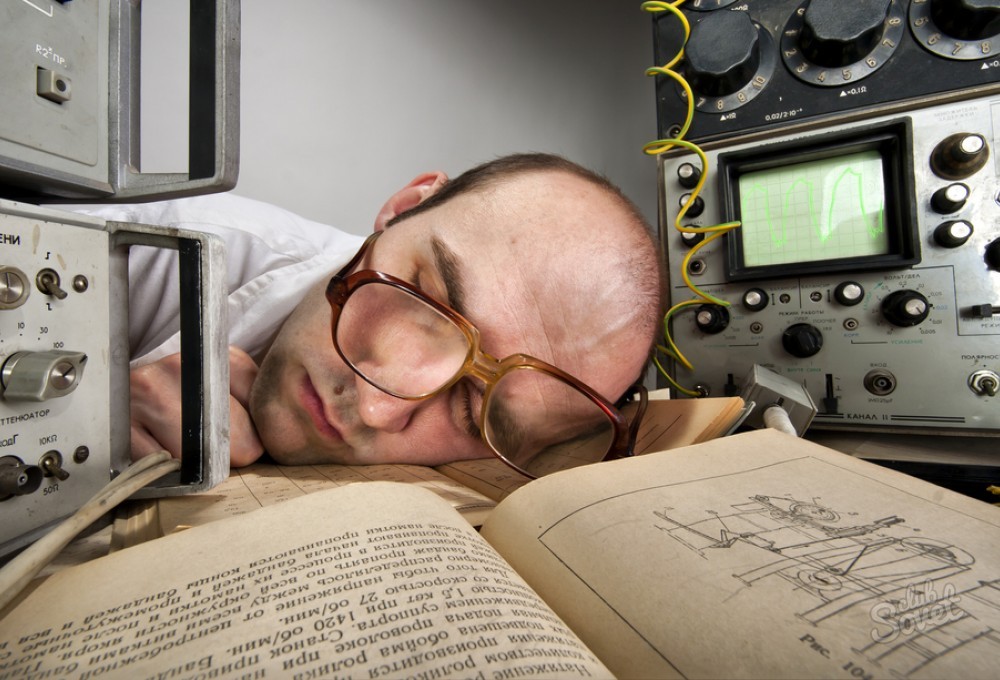
Be sure to write a scientific work deployed. Explain in detail the essence of a scientific article so that it is clear what it is about. If you use direct quoting, then put the phrase in quotes. Those words that are key can be highlighted in bold. We also insert charts, diagrams, tables, photos, etc. into the Word document as needed.

The name of the work is written on the first sheet in the center, then the information about the author and co-authors, and if necessary - the full name. head. More editorial required more detailed information about the writer, this sign must be filled.
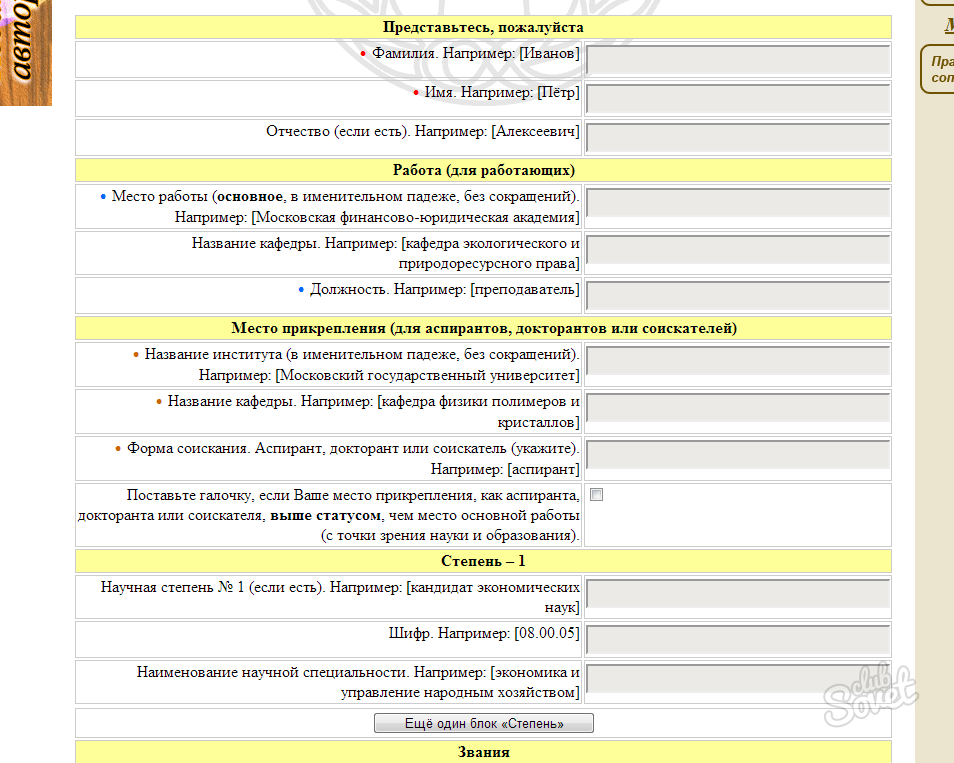
The article should not be less than four and more than 24 pages, although these requirements are different for different publishers. Some sites require a title, keywords and references to write in two languages - Russian and English. The author must take into account all these conditions.
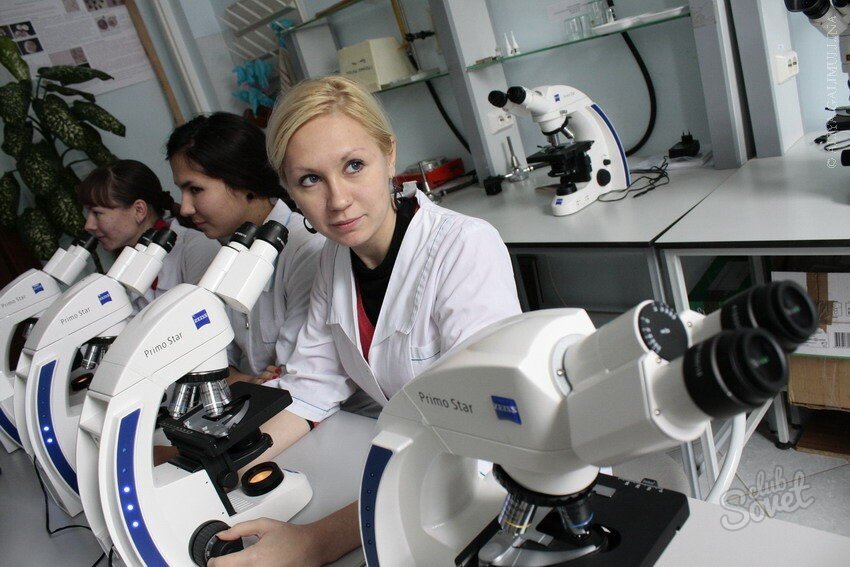
All these simple rules are not so difficult to fulfill if you are confident in computer systems. Only beginners will be more difficult. After all, for the first time, everything is always done for a long time, until you figure it out ...
application
to the information letter
Rules and sample design scientific articles
International Scientific and Practical Conference on:
“Current problems of ecological culture and
sustainable development of society "
Terms of registration materials
Scientific materials submitted for participation in the conference should be designed in accordance with the basic publishing standards for the design of articles in accordance with GOST 7.5-98 “Magazines, collections, informational publications. Publishing design of published materials ", bibliographic lists in accordance with GOST 7.1-2003" Bibliographic record. Bibliographic description. General requirements and rules of drafting.
1. Volume from 3 to 5 pages, format - A 4; use MS Word editor, only in doc and rtf format.
2. Font size 12 pt Times new roman (cyr), single line spacing, margins on all sides 2 cm, justified justification, paragraph indent 0.8 cm, portrait orientation, automatic hyphenation, “normal” style.
3. Placing text on a sheet:
1 line - the name of the work (CAPITAL LETTERS, bold, centered);
2 line is empty;
4 line - institution, city (the city is not indicated if it is included in the name of the institution). Center alignment.
4. The article should contain an abstract (800-1000 characters with spaces, no more than 7-8 lines) and keywords in Kazakh, Russian and english languages . Annotation is a summary of the content of a scientific work, giving a generalized view of its subject and structure. The abstract should include, in addition to the text: title, full name. authors, institution, city, designed in accordance with p.3. Keywords should provide the most complete disclosure of the content of the article. For each specific material, set 5-6 key words in order of importance, i.e. The most important keyword of the article should be first on the list. Careless or incorrect list creation will lead to the fact that these requests will bring other visitors to the site who are not interested in your work. Key words related to the article being presented should be included in Abstract, bearing in mind that most modern information systems perform a contextual search only by the names and annotations of scientific publications.
5. It should be limited to generally accepted abbreviations and avoid introducing new abbreviations without sufficient reason. Introduced abbreviations must be decrypted.
6. In tables, figures, formulas there should not be any discrepancies in the designation of symbols, signs. Figures should be clear, clean. The figures and tables in the text should be referenced. All figures and tables must have a name.
Abbreviations of words, names and names are not allowed, except for the accepted abbreviations of units of measurement, physical, chemical, technical and mathematical values.
EG:
Table 2 - Research approaches to the study of pedagogical stereotypes
Research approach and its features
one.
Dividing stereotypes into positive / negative or useful / harmful depending on the ways and forms of their use
Chaplygin Yu.S.
2
The stereotype can act as a certain scenario of the situation and as a representation itself.
Krasnykh V.V., Prokhorov Yu.E.
Figure 1 - The development of post-traumatic stress disorder personality
In the text, the number of formulas should be minimal. Formulas should be typed in the appropriate editor (for mathematical and chemical formulas). Tables should be headlined, empty columns are not allowed. Abbreviations and symbols should be explained in a note.
Illustrative materials are presented in the following formats: for photos, drawings - tiff or jpeg (300 dpi for black and white and color); graphs, charts, diagrams, etc. - exls, cdr. On the back of the picture or under it indicates the name of the author, title of the article and the number of the picture. Illustrations should be placed in the text and must be attached as separate files, which will later be used in the layout). Figure captions are given in a separate list at the end of the article. At the end of the article the manuscript is signed by all authors.
- 7. The list of references is required (from 10 to 20 sources), designed in accordance with GOST. The literature list is in accordance with GOST 7.1-2003 “Bibliographic Record. Bibliographic description. General requirements and rules of drafting. References to sources in the text of the article are given only in square brackets without quoting, when quoting or retelling the author's text. The numbering of references in the article is made according to the ordinal number of the source in the reference list of references. Archival materials are not included in the list, references to them are placed in the text in parentheses. When using sources from electronic resources or remote access (the Internet) in the article, the bibliographic record of the source and a link to a network resource with a complete network address on the Internet are given in the bibliography list. It is advisable to specify the date of reference to the resource.
For example (bibliographic information conditional):
For books : surnames and initials of the authors. Title. - Information about reprinting. - Place of publication: Publisher, Year of publication. - Number of pages.
For example:
For articles from journals : Names and initials of the authors. The name of the article // Title of the publication. (Series). - The year of publishing. - Tom. - Room. - Pages.
For example:
For conference materials, collections of papers, etc. : Names and initials of the authors. The name of the article // Title of the publication: Type of publication. - Place, year of publication. - Tom. - Room. - Pages.
For example:
http://translit.ru/.
For example (bibliographic information conditional):
List of used sources:
- 1. Ilyin V.A., Poznyak E.G. Linear algebra. - 3rd ed. - M .: Science, 1984. - 294s.
- 2. Panchuk D.A., Sadakbaeva Z.K., Puklina E.A. et al. On the structure of the interfacial layer at the interface of the metal coating to the polymer substrate // Russian nanotechnologies. - 2009. - T.4. - № 5-6. - P.114-120.
- 3. Prikhodko N.G., Lesbaev B.T., Chenchik D.I., Najipkyzy M., Mansurov Z.A. Synthesis of carbon nanostructures in a flame at low pressure // VI International Symposium: Physics and Chemistry of Carbon Materials / Nanoengineering. - Almaty, 2010. - p. 135-138.
- 8. Information about the authors
A certificate of each of the authors of the article is attached to the manuscript, indicating the last name, first name, and middle name; academic degree; academic rank; main place of work; posts; home, service or mobile phones ; electronic and postal addresses (for communication with the editors); it is necessary to indicate the detailed names of organizations, cities, countries where the work was done, e-mail of one of the authors. Specify footnotes to the place of work of the authors.
It is necessary to specify : faculty (scientific research institute, department), university, city, country. Chairs, departments and other sections do not need to be specified.
- · It is necessary to submit an electronic version of the article to the editor in full compliance with the printout. The file name must begin with the first author's last name in Latin (for example, Ivanov.doc (rtf)). Pages of the article should be numbered. All articles submitted to the editors are reviewed. If necessary, the article can be returned to the author for revision. The editors reserve the right to make editorial changes that do not distort the meaning of the article.
References should be submitted in Russian and in standard English transliteration. This can be done using the program listed on the site http://translit.ru/.
Schematic example of the article
· UDC
· In the center are:
- Surnames and initials of the authors (eg: Ivanov I.V., Krylov S.P.)
- The full name of the institution that the author represents (indicating the city).
Ivanov I.V.1, Krylov S.P. 2
1Kazakh National University named after Al-Farabi, Almaty, Kazakhstan;
2Institute of Combustion Problems, Almaty, Kazakhstan
- Email address
- Title of the article (bold spelling)
- annotation
- Keywords
- Article text
- Literature
- At the end of the article there is a translation in the two other languages (in turn) the title of the article, full name. authors (font size is 2 pins smaller than the main one).
- On separate pages there are illustrations (figures, diagrams, tables, etc.) with inscriptions.
- Information about authors.
The name of the file containing the text of the article should be changed to the Surname IO. (initials) of the author. If the author has more than one article, then they should be numbered in the file name (“Last Name IO-1.doc”, “Last Name IO-2.doc”, etc.). The styles and formatting available in the sample should be kept ; the text is available in Kazakh, Russian or English.
Surname First name Patronymic (completely) in Kazakh / Russian and English
Position, academic degree, rank
Organization
Address
A country
Phone slave. Cell
Fax
E- mail
Article title
Form of participation (poster / oral report / publication)
Section name
Additional Information
We kindly request to fill out the application in full.
Information about the conference will be updated on the websites: www.nii-eco.kz and.
For questions, contact the organizing committee of the conference of the Research Institute for Environmental Problems by phone:
The style of a scientific article is fundamentally different from the texts of a copywriter and has its own characteristics. Writing a scientific article for publication in a journal requires a high concentration of attention and considerable effort. Therefore, today we analyze the main features of writing a scientific article.
There is one wise advice from recognized teachers: you need to take breaks between writing different parts of a scientific work or article. So you can rethink written. However, each section of the work should be written in one fell swoop, in one breath. A single impulse will require a lot of effort, but in general the time and energy costs will decrease.
As for attention. It is not enough, it is necessary to show increased concentration when checking articles and their proofreading. Read more about attention span.
- In the process, it is easy to forget what I wrote myself. Therefore, thanks to this mode, you will avoid repetition.
- Taking breaks in the process of writing an article, there is a desire to stop work. Therefore, in order to avoid this desire, it is better to write as much and faster as possible at a time.
- The timing of writing the work is best not to delay. We must try to do it as early as possible, then there will be plenty of time for possible improvements.
Sequence of presentation
The main difficulty in the sequence of presentation of work, not even the search for the necessary terminology and successful phrases and expressions, namely the sequence of narration.
You need to write only the truth and only the truth. It is important not to repeat the work and not to lose anything. It is very difficult to start writing, although it still runs from the first lines. To make the presentation of the work easy, make a work plan and build meat on it, the structure of the article should be formed before it is written. As they say, make drawings - write a beautiful text (thesis) - add meat to this frame. The presentation system allows you to simply talk about the subject of work.
Scientific text structure
When writing an article guided by logic, and again, the sequence. The analysis of actions is always confirmed by the conclusion.
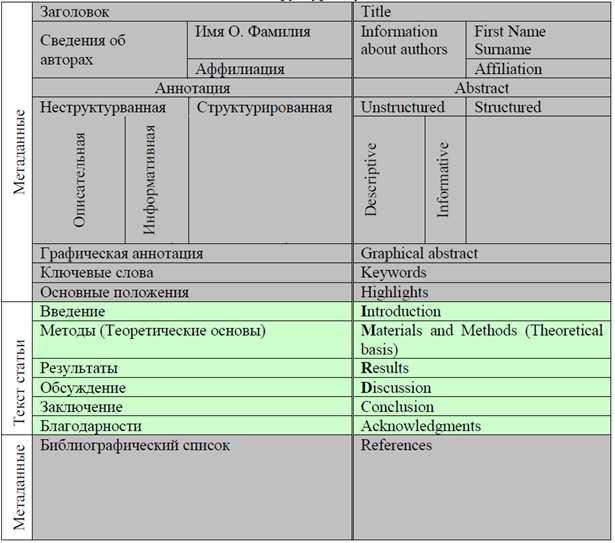 The structure of the scientific article
The structure of the scientific article
Article structure:
- annotation;
- introductory part;
- the main (main) part;
- conclusion;
- bibliography;
- keywords.
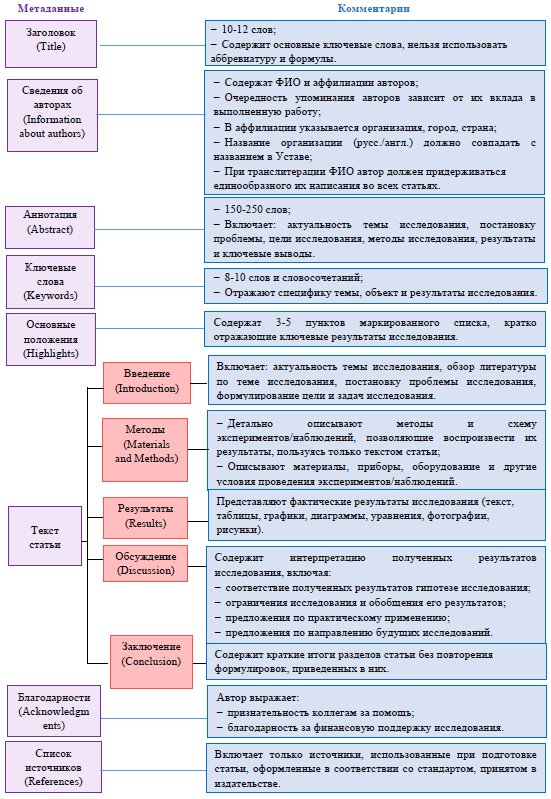
annotation
Brief description and description of the work given by the author. The abstract contains only a short list of main questions. Ideas that are pursued by the article appear in a very short text. The main objectives of the annotation:
- the relevance of the article;
- formulation of the problem;
- solutions to the problem;
- work result and conclusion.
All these questions in the abstract are assigned one sentence at a time.
Hint: for a clear indication of the thought it is recommended to use steady momentum. This: " In the work:" reviewed, studied, presented, analyzed, summarized, verified, proposed ... ". Specific figures and details of the work are not recommended to be mentioned in the abstract.
Prologue
Here is written the relevance of the issue, the novelty of the work, the goals and objectives of the study. The relevance of the topic is the importance of working in the present (given) time and for solving a specific issue. The ability of work results to solve important practical problems. Novelty - the difference of this work from other authors.
Main part
It consists of an analysis of literature and thematic sources of information. It lists the goals pursued by the main part:
- formulation of research hypothesis;
- story about the study;
- listing of research results;
- recommendations on their application in practice, than they can be useful;
- specification of work results;
- explanation of the results.
The presentation of the main part should go, focusing on these goals. Each argument is checked against the main pillar of the idea carried by the article. For a better perception of the main part, it is recommended to structure it, breaking the main part into subsections.
If for the usual informational or selling text it is common to write the main part, then they start thinking about the title of the article, then for a scientific article everything happens exactly the opposite. First come up with a name, and then reveal its meaning. It must contain the main point articles. Maximum amount Words 10 - 12. Longer titles are poorly perceived by the reader.
Final part
It consists of a brief formulation of the results with an emphasis on the usefulness of further research objectives.
When writing an article based on experimental data as a result of a great deal of work, conclusions are drawn instead of conclusion. They should be presented in the form of theses.
When making a work, remember that it is not recommended to write in the subtitles what it is: introductory, main or final part.
Bibliography
It is placed behind the text, tied to specific places in the text with the help of references. Thanks to the list, the reader can verify the depth of the work. Thus, the author’s scientific position is demonstrated.
Thanks to the list, the ideas of other authors are recognized and used, thus avoiding charges of plagiarism. Using the list, you can easily find the source to which the author refers in order to get acquainted with it and confirm the accuracy of all information gathered from this source.
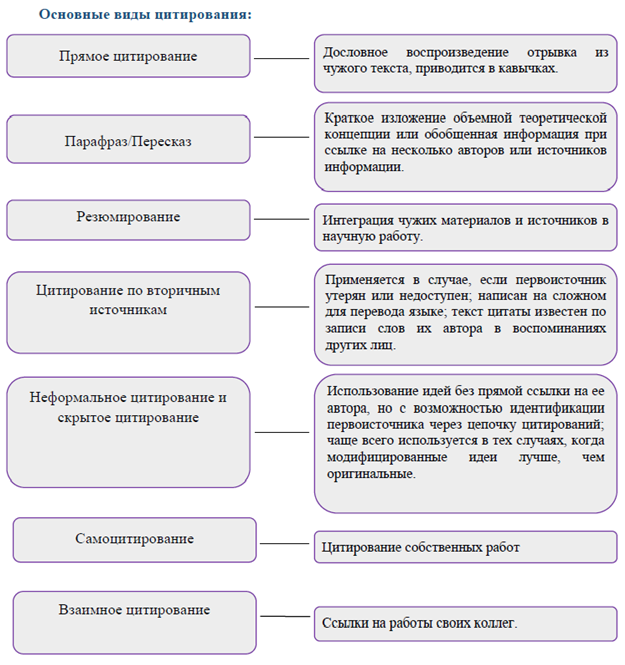 Types of citations
Types of citations
Keywords
The reader’s guide, which he studies before reading the article, they constitute the semantic core of the article. Both single words and phrases and phrases are used. Each keyword must have its own meaning.
Summary: the writing of scientific texts is fraught with great difficulties and a fair share of responsibility. The ability to write scientific texts puts an ordinary copywriter a step higher than the authors writing selling texts. This allows you to evaluate the procedure for writing scientific articles quite high.
Well friends, let me finish with this! I hope that the article will be useful to someone.
If you find an error, please select the text fragment and press Ctrl + Enter .


